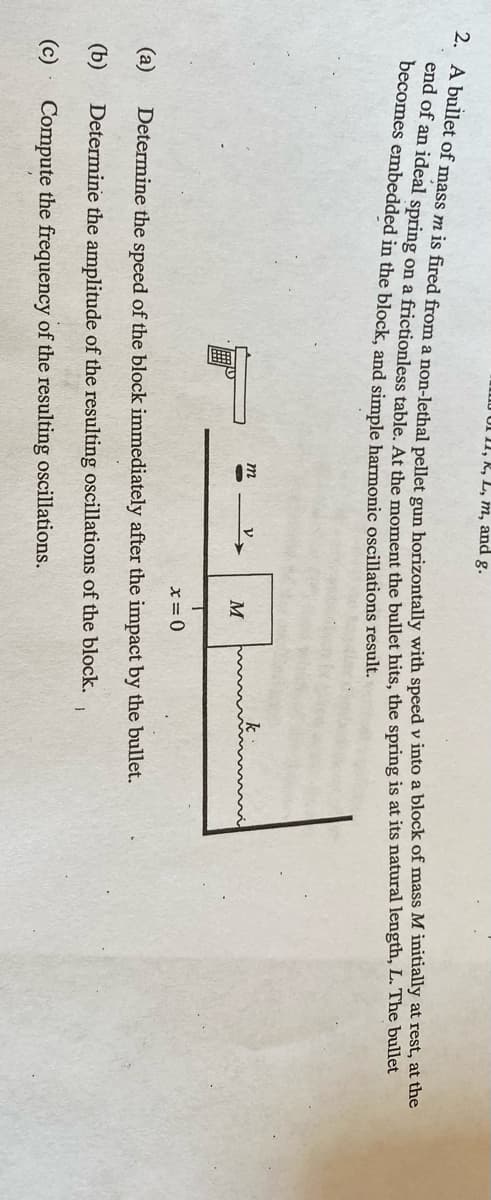ni, D, M, allu g. mes embedded in the block, and simple harmonic oscillations result. m x= 0 Determine the speed of the block immediately after the impact by the bullet. Determine the amplitude of the resulting oscillations of the block. Compute the frequency of the resulting oscillations.
ni, D, M, allu g. mes embedded in the block, and simple harmonic oscillations result. m x= 0 Determine the speed of the block immediately after the impact by the bullet. Determine the amplitude of the resulting oscillations of the block. Compute the frequency of the resulting oscillations.
Related questions
Question
Hello, one picture is the question the other is the 2 parts that come with the question. Please answer both parts and show all work. This is technically 1 question that has 2 parts so it’s not against guidelines. Thank you!!!

Transcribed Image Text:mu Juul adliswer in terms of L
(d)
Determine the period of the oscillations of Block 1 after the collision, writing your answer in terms of T, the period of
the oscillations that Block 1 would have had if it did not collide with Block 2.
(e)
Find an expression for R in terms of H, k, L, m, and g.
4. A
de

Transcribed Image Text:, k, L, m, and g.
becomes embedded in the block, and simple harmonic oscillations resuit.
m
M
x= 0
(a)
Determine the speed of the block immediately after the impact by the bullet.
(b)
Determine the amplitude of the resulting oscillations of the block.
(c)
Compute the frequency of the resulting oscillations.
Expert Solution
Step 1
Solution:
a). Let us conserve the momentum of the system. Given that the block of mass M is initially at rest and the bullet of mass m has initial speed v. There is no friction acting in this case. The total momentum before collision will be the same as the total momentum after.
This is the speed of the block immediately after the collision.
Step by step
Solved in 3 steps
